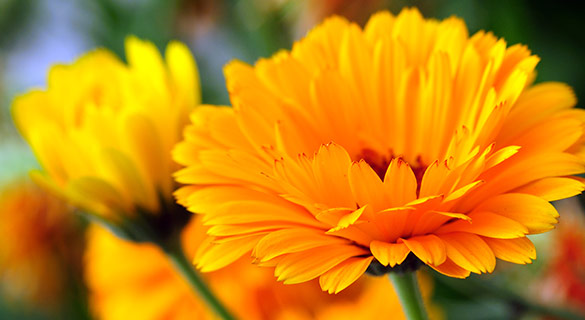Skin and coat support for pets. HomeoPet Coat Rescue medicine may help support healthy skin and a shiny coat in dogs, cats and other pets. This easy to dose liquid medicine may help with smelly skin and ears, earwax buildup, greasy coat, dandruff, seborrhea and itching.
Benefits:
- Safe Ingredients. Our safe, gentle Coat Rescue medication is made from natural ingredients that may help smelly skin and ears, earwax buildup, greasy coat, dandruff, seborrhea and itching.
- Fast Acting Liquid that is simple and easy to use. You can put the Coat Rescue drops directly into the mouth, in water, or dose at meal or snack time as per pack instructions.
- Veterinary Formulated. Daniel H. Farrington and his veterinarian brother Thomas Farrington created HomeoPet to bring high-quality, safe, natural and affordable treatments and supplements to pets and pet guardians worldwide.
- Simple, Safe & Pure with no known side effects and has been safely used long term.
- Competition legal – HomeoPet products are registered medicines, not performance enhancing products. Nothing in any of HomeoPet’s medicines test positive in show animals, therefore they are considered extremely safe for competition use.
- Great Value with up to 90 doses per bottle (depending on weight).
- HomeoPet Coat Rescue medicine is a natural homeopathic medicine that can be safely used on dogs, cats and other pets of all ages.
May help promote relief from the following symptoms:
- Smelly skin and ears
- Earwax buildup
- Greasy coat
- Dandruff
- Seborrhea
- Itching
Safe, Gentle, Natural medicines for your best friend.
Ingredients – Coat Rescue
Antimonium crudum 6c
(Native Sulphide of Antimony)
A natural product occurring in the shape of black parallel needles having a metallic lustre; the ore contains twenty-eight parts of sulphur with one hundred parts of antimony.
Arnica montana 200c
(Leopard’s Bane)
Is a ethnobotanical European flowering plant in the sunflower family.
Apis mellifica 6c, 30c, 200c
(Honey Bee)
More recognizably known as the “western honey bee.” This species of honey bees is believed to have originated in either Africa or Asia, but now can be found on every continent except Antarctica.
Arsenicum album 6c, 30c, 200c
(White Oxide of Arsenic)
Homeopathic arsenicum album is a dilution of the ingredient to where there is little or no arsenic remaining.
Belladonna 200c
(Deadly Nightshade)
A herbaceous plant in the nightshade family. It is native to Europe, North Africa, and Western Asia.
Berberis aquifolium 6c
(Oregon Grape)
More Commonly known as the “Oregon Grape” – the state flower of Oregon. It is a flowering plant native to western north america.
Caladium seguinum 6c, 30c
(American Arum)
A genus of flowering plants in the family Araceae, native to Europe, northern Africa, and western and central Asia, with the highest species diversity in the Mediterranean region.
Cantharis vesicatoria 6c, 30c, 200c
(Spanish Fly)
Spanish fly is an emerald-green beetle, Lytta vesicatoria, in the blister beetle family.
Cortisone aceticum 30x
(Cortisone)
Cortisone is a close analogue of cortisol, the body’s natural anti-inflammatory hormone. Chemically, cortisone is a steroid hormone made by the adrenal glands from the precursor molecule cholesterol.
Culex musca 30c
(Mosquito)
Culex is a genus of mosquitoes.
Graphites 6c
(Black Lead)
Archaically referred to as plumbago, is a crystalline allotrope of carbon, a semimetal, a native element mineral, and a form of coal. Graphite is the most stable form of carbon under standard conditions.
Hepar sulphuris calcareum 30c, 200c
(Calcium Sulphide)
A compound with the formula CaS. This white material crystallizes in cubes like rock salt.
Histaminum 30x
(Histamine)
Histaminum hydrochloricum is a homeopathic remedy that is made from histamine dihydrochloride.
Hypericum perforatum 10x, 30c
(St. John’s Wort)
A flowering plant in the family Hypericaceae. The common name “St John’s wort” may be used to refer to any species of the genus Hypericum.
Ignatia amara 30c
(St. Ignatius Bean)
A tree in the Loganiaceae family, native to the Philippines, particularly in Catbalogan and parts of China.
Lachesis mutus 200c
(Bushmaster Snake)
Found in South America. Two subspecies are currently recognized, including the nominate subspecies described here.

Calendula officinalis (Marigold)
Safe, Gentle, Natural liquid dosing medicines for your best friend.
Ledum palustre 6c, 30c, 200c
(Wild Rosemary)
Is a flowering plant in the subsection Ledum of the large genus Rhododendron in the family Ericaceae.
Lycopodium clavatum 30c
(Club Moss)
A genus of clubmosses, also known as ground pines or creeping cedar, in the family Lycopodiaceae, a family of fern-allies.
Mezereum (daphne) 6c, 30c
(Spurge Olive)
A species of Daphne in the flowering plant family Thymelaeaceae, native to most of Europe and Western Asia, north to northern Scandinavia and Russia.
Petroleum 6c
(Crude Rock-oil)
Consists of naturally occurring hydrocarbons of various molecular weights and other organic compounds. The name petroleum covers both naturally occurring unprocessed crude oil and petroleum products that are made up of refined crude oil.
Pulex irritans 30c
(Common Flea)
Fleas are small flightless insects that form the order Siphonaptera.
Pulsatilla nigricans 30c
(Wind Flower)
Pastures in Central and Northern Europe and parts of South England.
Rhus toxicodendron 6c, 30c, 200c
(Poison Oak)
Is an Asian and Eastern North American flowering plant in the genus Toxicodendron.
Silicea 200c
(Pure Flint)
A sedimentary cryptocrystalizaline form of the mineral quartz. It occurs in nodules in the rocks and often has a glassy or waxy appearance.
Staphysagria 6c, 30c, 200c
(Stavesacre)
A species of Delphinium, or larkspur, of the family Ranunculaceae. This plant is also known as lice-bane or stavesacre.
Sulphur 6c, 30c
(Brimstone)
Symphytum officinale is a perennial flowering plant of the genus Symphytum in the family Boraginaceae. Along with thirty four other species of Symphytum, it is known as comfrey.
Urtica urens 6c
(Stinging Nettle)
Is a herbaceous annual flowering plant species in the nettle family Urticaceae.












